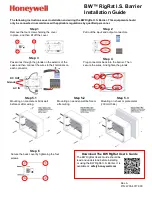
26
TARGET RECOVERY
7.
Practice. Practice over known targets. Practice
ground balancing. Practice pinpointing. Reread
the appropriate part of this manual if you’re having
problems.
Whichever method you choose, remember that responsible
treasure hunters take pride in their ability to leave soil and
vegetation intact and undamaged.
RECOVERY TOOLS
1.
A heavy duty, blunt screwdriver is commonly used
by expert Treasure Hunters and is the tool of choice
for cut lawns.
2.
A sturdy hunting knife with a five inch blade will do
the job on most other soils. A high quality double
edge “survival” knife is an even better (and more
expensive) choice since it will be almost impossible
to bend or break.
CAUTION:
Using a jack knife without a locking
blade is a good way to lose a finger!
3.
A narrow garden trowel will work in loose or wet soil.
4.
Several excellent digging tools are made just for
the
Treasure Hunter and especially designed sand
scoops are available for beachcombing.
5.
A thin, dull probe is the preferred tool for precise
target location.
FALSE SIGNALS
A “false signal” occurs when a target is incorrectly identified.
For example, a small broken-off piece of pull-tab may be
identified as a nickel. Or a small deep coin, especially in
mineralized soil, may read “IRON”. The more sensitive the metal
detector, the harder it is
not to have false signals. Your CZ-5 is an
extremely sensitive machine so you’re bound to encounter them.
Here are some of the most frequent sources of false signals and
what to do about them:
Summary of Contents for M-Scope CZ-5 Quicksilver
Page 39: ...37...













































